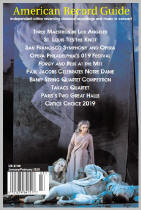Texte paru dans: / Appeared in: |
|
|
Outil de traduction ~ (Très approximatif) |
|
|
Reviewer: Peter
Loewen
To commemorate the 500th
anniversary of the Emperor Maximilian I’s death in 1519, the ensemble Per-Sonat
has assembled a program of German and French songs and dances by some of the
most famous composers of his time. Heinrich Isaac and Ludwig Senfl were the
leading composers at Maximilian’s court, and their works dominate the
program. Yet Maximilian’s marriage to Maria of Burgundy in 1477 brought him
into contact with the riches of Franco-Netherlandish culture. That is
represented through the works of Johannes
Ockeghem, Antoine Fevin, Pierre
Mouton, Josquin des Prez, and Adrian Willaert.
The first lied by Ludwig Senfl,
‘Kain Höhers Lebt Noch Schwebt’, sets the tone for the program to follow,
both in its subject and musical quality. The text is about Maximilian’s
largesse, like an eagle whose wings spread over the entire empire.
Musically, it is the contemporary taste for intricate counterpoint. This is
clear in Heinrich Isaac’s ‘Zwischen Perg und Tieffe Tal’ and Ockeghem’s
famous rondeau ‘D’ung Aultre Amer’. There are too many gorgeous songs here
to mention them all, though Willaert’s ‘Kein Adler in der Welt so Schön’ is
among the most breathtaking. ‘Adler’ refers to Katharina Adler, daughter of
a wealthy merchant family in the imperial city of Augsburg, for whose
wedding Willaert composed the song. It is performed here by two singers and
string instruments. Many vocal works in this period were preserved in lavish
editions produced by the great Burgundian scriptoria in what is now Belgium.
Outstanding among those manuscripts is the so-called Tanzbüchlein der
Margarete, a book of dance music notated in gold and silver ink on black
parchment named after Maximilian’s daughter Margaret (Margaret of Austria).
Per-Sonat performs several basse danses from the manuscript etween the vocal
pieces, always with the appropriate ornamentations. Notes and paraphrases of
the texts are in English. | |
|
|
|
|
Cliquez l'un ou l'autre
bouton pour découvrir bien d'autres critiques de CD |
|




